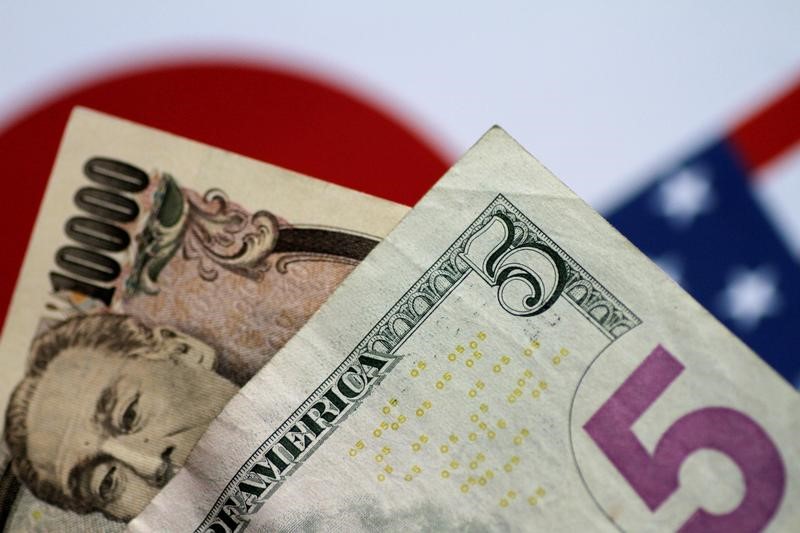Investing.com — Most Asian currencies weakened Thursday, with the yen hitting a near one-month low after the Bank of Japan kept interest rates steady and announced a cautious outlook.
But the biggest pressure on Asian currencies was a stronger dollar, as the greenback rebounded to a more than two-year high after the Federal Reserve cut its outlook for interest rate cuts in the coming year.
The New Zealand dollar also severely underperformed, trading at its lowest in more than two years after gross domestic product data showed the country entering a recession in the September quarter.
Yen weakens, USDJPY at near 1-month high after BOJ held firm
The Japanese yen weakened on Thursday, extending overnight weakness after the BOJ made a near-unanimous decision.
The yen pair rose 0.3%, crossing the 155 yen mark for the first time since late November.
The BOJ kept interest rates steady and set a cautious outlook for 2025, amid signs of rising inflation and sluggish Japanese economic growth.
Although the BOJ’s decision was in line with a Reuters poll, it still disappointed some investors who were pushing for a December rate hike. The central bank had raised interest rates twice this year in a historic reversal from ultra-loose policy.
Analysts still expect the BOJ to raise rates further, possibly in January or March.
Dollar at highest point in more than two years as Fed signals slower interest rate cuts
The and rose slightly in Asian trading after racing to a more than two-year high on Wednesday.
The dollar’s rally was largely driven by the Fed. While doing so on Wednesday, the central bank signaled a substantially slower pace of rate cuts through 2025, against the backdrop of persistent inflation and the strength of the U.S. economy.
The Fed effectively halved its rate cut outlook for 2025 and now forecasts just two cuts of 25 basis points, compared to previous expectations of four cuts.
The New Zealand dollar is falling as the country enters a recession
The New Zealand dollar pair fell to a more than two-year low on Thursday after GDP data showed the country entered a technical recession in the September quarter.
The economy contracted at an annual rate of 1.5% in the quarter, much lower than expectations of a 0.4% contraction. The print marked a second straight quarter of negative GDP, confirming a technical recession.
The weak pressure led to increasing calls for further rate cuts by the Reserve Bank of New Zealand. The RBNZ cut rates by a total of 125 basis points in 2024 and has announced more easing to help support the economy.
Broader Asian currencies posted sharp losses against the US dollar following aggressive signals from the Fed.
A slower pace of rate cuts bodes ill for Asian markets, as interest rate differentials between the dollar and regional currencies are likely to tilt in the dollar’s favor in the coming months.
The Indian rupee has been among the worst performers in recent sessions, with the combine rising to a new record high above 85 rupees on Thursday.
The Australian dollar pair rose 0.2% after falling to a more than two-year low.
The Chinese yuan pair rose 0.3% to reach its weakest level since September 2023. The yuan was also pressured by the prospect of looser monetary conditions in China as the government flagged more stimulus measures to boost growth.
The South Korean won pair fell 0.4% after hitting its highest level in almost 15 years, with ongoing political unrest in the country adding to pressure on the won.
The Singapore dollar pair rose 0.1%.


